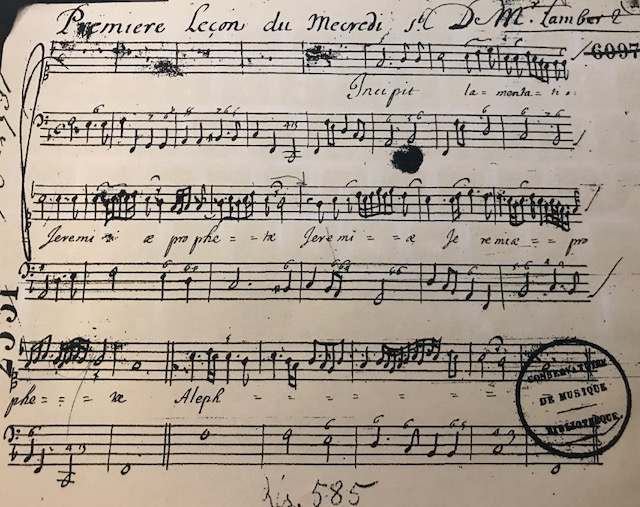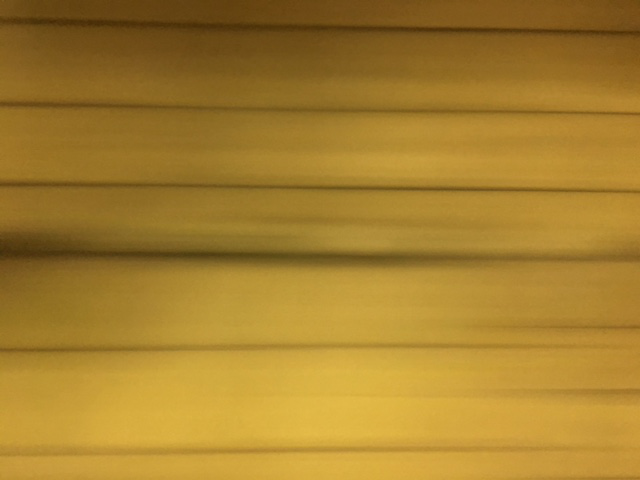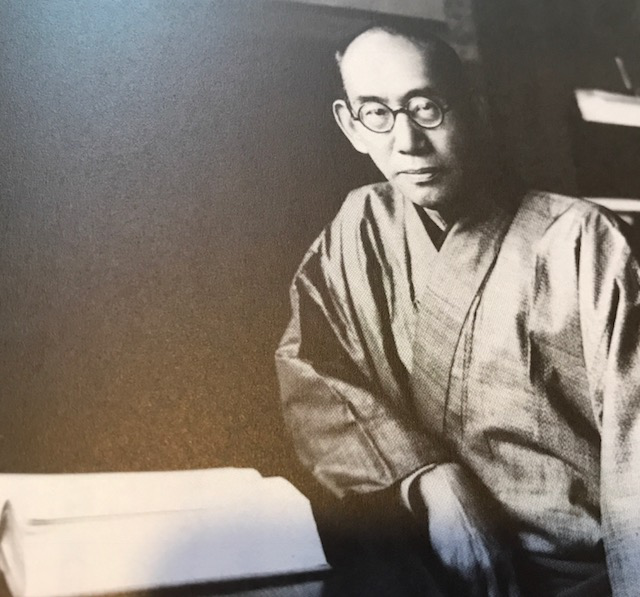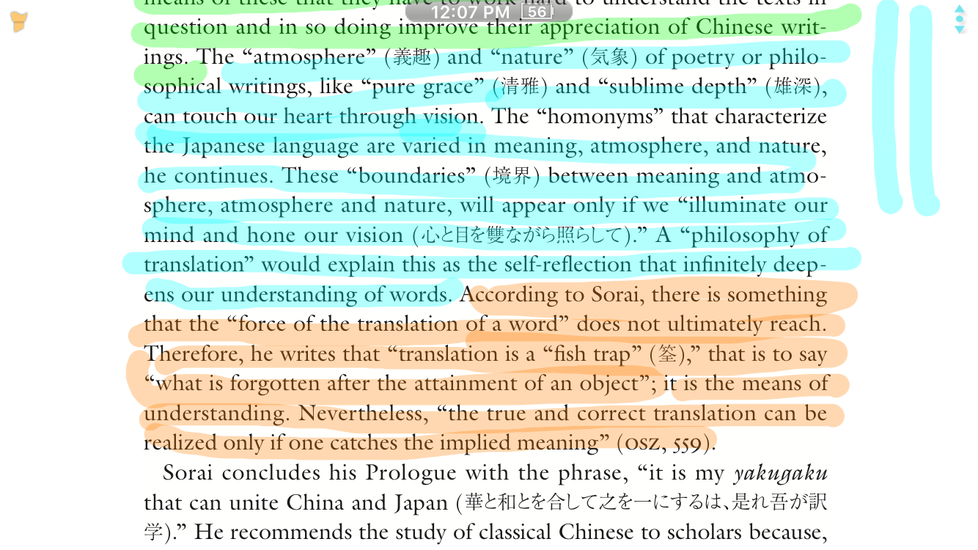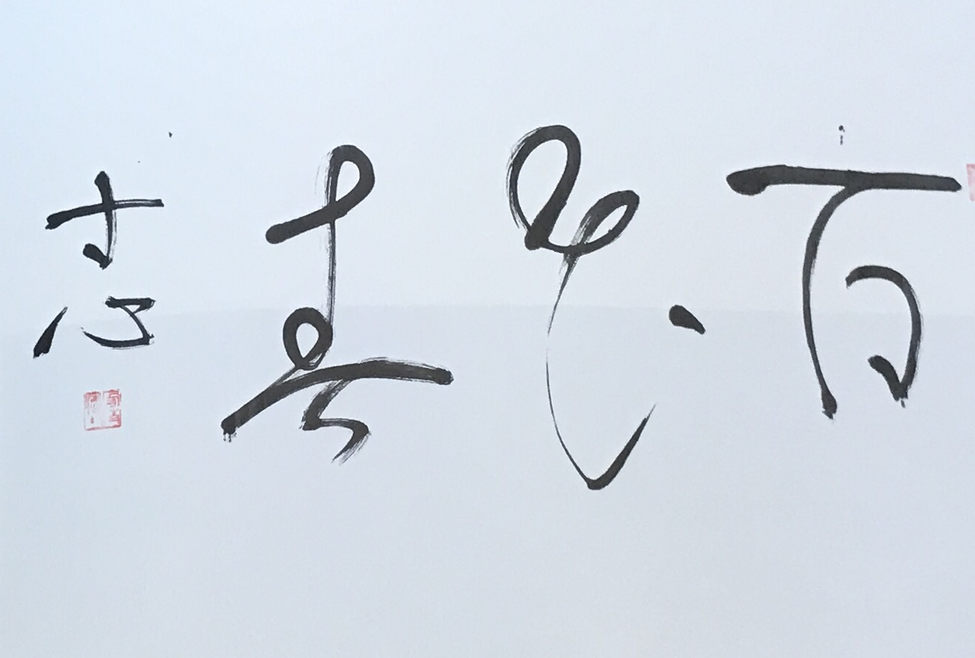Thinking by Singing/ Singing by Thinking, or The art of Performing Translation through Japanese philosopher Kitaro Nishida’s concept of Acting-Intuition
Elisabeth Laasonen Belgrano
Prestented at:
Interference #5 at Inter Arts Center, 16-18 January 2018
ABSTRACT
The aim of this paper is to present a performative encounter between a singing/thinking voice and the Japanese philosophical concept of Acting-Intuition proposed by Kitarō Nishida (1870-1945), founder of the Kyoto School (of Japanese Philosophy) around 1913. Departing from a vocal investigation of French composer Michel Lambert’s Leçons de Ténèbres (ca. 1664), the performer follows the thoughts crystallizing in the very act of singing. This intuitive act complies to Nishidas view of “our active engagement with our surroundings” and “never just the passivity of pure reception” (Krummel 2015:87). In the act of singing the singer and song are shaped along with the shaping of space itself. Thus, while singing a song and a space the singer is acted upon by both space and the song. In this way, acting-intuition proves to be a concrete mode of human existence in the world’s dynamism, providing a non-dual platform for determining human living. In the process of singing in a space along with an audience, the listeners are involved in the intuitive act and as well as in the translation process of incorporating ‘the other’ as well as “developing one’s identity” (Bouso 2016:112) The thinking by singing can thus be regarded as an experience of translating and transporting meaning from one place to another. Acting-Intuition can also be used a philosophical tool, for reminding us to “rethink our own linguistic categories, to reflect on ourselves at the same time as we reflect on others” (Bouso 2016:113). Applying Acting-Intuition as an artistic research methodology, might perhaps even help us re-envisioning a sense of trust and an “eternal link among all living beings, all beings in their aliveness, this shared transience, and the possibilities for renewal that follow downsfall”, allowing us to “facing the im/possibilities of living on a damaged planet” (Barad 2017:75).
”B’reishit. In the beginning of…
In the begining… there was an interruption, a rupture, a break in the contiuum of time before time.
A disruption, a hesitation, a pause, a stutter, a disjointsure, a cut. In the beginning of… before we even get to the beginning of…
There is a break that disrupts the very possibility of origin and the unlinear unfolding of…
In the beginning that was an originary dis/continuity that breaks open the continuity of time, before it gets started, before there is a beginning.”
(Barad 2017:42-43)
The tehomic practice emerges in metonymic proximity to the key principal of the chaos theory: ”extreme sensitivity to initial conditions”.
(Keller 2003:5)
”Goddess of the salt sea […] She is the symbol of the chaos of primordial creation. She is referred to as a woman, and described as the glistening one. It is suggested that there are two parts to the Tiamat mythos. The first in which Tiamat is a creator goddess […] peacefully creating the cosmos through successive generations. In the second Chaoskampf Tiamat is considered the monstrous embodiment of primordial chaos.”
(Wikipedia: Tiamat)
”We have an immediate graps of the world by acting within it, and in it, and in this pre-reflective immediacy there is no separation between inner and outer, or between mind and matter, subject or object. We act on things while being acted on by them. We determinate the things that determining us; we shape the things around us as we ouselves are being shaped. So we see by acting and act by seeing; they generate each other.”
(Krummel 2015:87)
”through acting intution, we alter the world, giving it form, and this simultaneously means the world’s self-formation.”
(Krummel 2015:88)
”The true self, the self in its most concrete immediacy, then, is an acting self […] partaking in the world’s poesis (production).Instead of being de-worlded subjects observing the world from without, we are radically implaced within the world’s dynamism. The subject of cognition is founded on the fact of acting-in-the-world. We always find ourselves in the concrete situation of a dynamic inter-activity, reducible to neither terms of subjectivity or objectivity, to spirit or matter, before the polarization in intellectual analysis between subject and object. As we interact with things, we also come to see them and the world around us as in the light of the context of that interactivity. We are both spectators and actors in th unfolding of the great play of life […]. To express the inseparability between seing things and acting on them Nishida neologizes the term ’acting intuition’ […] first introducing it in the mid-1930s.”
(Krummel 2015:86)
“We are both spectators and actors in the unfolding of the great play of life […]. We see as we act; cognition implies action”.
(Krummel 2016:86)
“as our partaking in the dynamic of the dialectical world, acting intuition provides the non-dual basis for all subsequent dichotomizations, such as the subject-object duality.”
(Krummel 2015:87)
”When the world becomes self-aware, our self becomes self-aware, and when our self becomes self-aware, the world becomes self-aware.”
(Krummel 2015:88)
Kitarō Nishida (1870-1945) Japan's first modern philosopher. Founder of the Kyoto School, Kyoto University.
”The content is transformed from a finished text to an ongoing conversation, […] what the original text loses in authority it gains in liveness. It is transformed from philosophical thoughts to philosophical thinking. The aim of this communication is not to retain the purity and innocence of an original text at all costs, but to engage the original in conversation ”
(Heisig 2016:17)
”The translator breathes in the text, holds it, and then breathes it out so that the words frozen stiff on the printed page can melt into the vernacular that flows naturally for the reader. […].The result is not a finished product because the thick translation is not aiming at perfection.”
(Heisig 2016:15)
Materialiet ”presenteras som pågående skeenden i vilka agentiska snitt synliggör intra-aktioner […]. De agentiska snitten görs synliga för läsaren som berättande text gör en ansats att lyfta fram relationer och händelser utan hierarkier, samt synliggöra performativitet i det pågående. Målet med användandet av den platta ontologins språk blir också att på ett utplattat vis synliggöra både det materiella och de mänskliga rösternas agens i det pågående”
(Magnusson 2017:144)
”a poetic experience of reality itself, an experience of reality in which the ’physical’ is not carefully segregated from the ’psychological’[…] “it is Dreaming stories which transmute the terrain of the as yet uninterpreted and hence undifferentiated world into terrains of meaning. When the world is storied in this way, a conceptual frame of meaning is created through which human life more generally can be thought about: if an object or state of affairs has not been storied, it cannot be thought about. This is a theory which explains how and why cultures generally create and rest on a repertoire of Dreaming stories – myths – that serve as primordial templates for concepts and hence for thought/intelligibility. It details the process whereby the raw human experience of the world, still entangled with the particularity of geography and topography, becomes transmuted, via ceremony, into story and thence into concept.”
(Mathews 2009:5)
”My presentations of […] are always-already shot through with my redings of […], which are shot through with readings of […], which are shot through with a […] commitment to unsettling and blasting through the […] that block the flow of the lifeblood of the planet […], from circulating in ways that support mutual thriving and survival in our cohabitating intra-dependence.”
(Barad 2017:42)
”Language and speech, as a medium of expression, are a performance and as such entail gestures and bodily action, which in turn imply interaction with others”.
(Bouso 2016:112)
”reflects the poethic practices and approaches […]. A poethic practice can be said to be an encounter that embraces a political, poetic and ethical dimension to embodied situated knowledges that challenge normative approaches. Transferring poethics into a situation denotes contact, listening, reflection and being in relation with others, human and nonhuman. […] poethical embodiments include bodies entangled with surrounding space and its engrained history, experiences, affects and responses, and usually seek transformation through matter of care”.
(Orru 2017: 33)
”One might think of the practice of translation as a kind of self-cultivation or spiritual exercise in which one need to empty oneself in order to give voice to an otherness speaking through the words of another. […]translation may be said to be an occasion to develope one’s identity to incorporate the ’other’”.
(Bouso 2016:112)
Philosophical/performance/philosophy and poethic ways to approach experiences ”demonstrate how every utterance has the potential to be regarded as an experience of translating feelings into images, emotions into words, the ineffable into an open-ended and non-restrictive kind of speech. […] The literal meaning of the Latin root translatio captures this well: in the creative process of articulation one is transported from one place to another”.
(Bouso 2016:112-113)
”Facing the im/possibilities of living on a damaged planet, where it is impossible to tease apart political, economic, racist, colonialist, and natural sources of homlessness (otherwise called ’the problem of refugees’), will require multiple forms of collective praxis willing to risk interrupting the ’flow of progress’ – not by bombing the other, but by blasting open the continuum of history.”
(Barad 2017:75)

